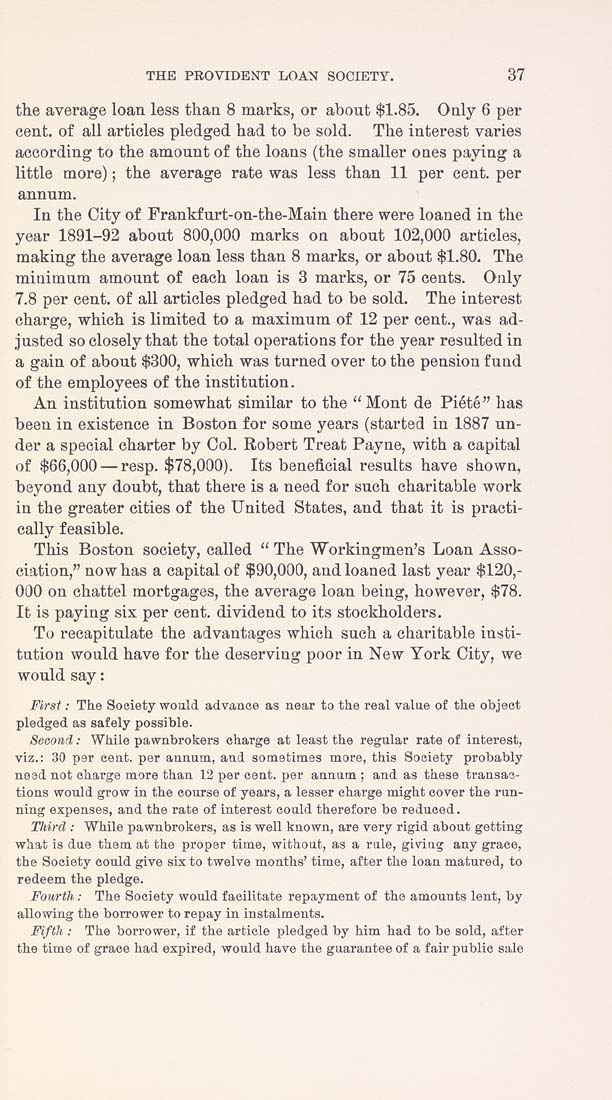THE PROVIDENT LOAN SOCIETY. 37
the average loan less than 8 marks, or about $1.85. Only 6 per
cent, of all articles pledged had to be sold. The interest varies
according to the amount of the loans (the smaller ones paying a
little more); the average rate was less than 11 per cent, per
annum.
In the City of Frankfurt-on-the-Main there were loaned in the
year 1891-92 about 800,000 marks on about 102,000 articles,
making the average loan less than 8 marks, or about $1.80. The
minimum amount of each loan is 3 marks, or 75 cents. Only
7.8 per cent, of all articles pledged had to be sold. The interest
charge, which is limited to a maximum of 12 per cent., was ad¬
justed so closely that the total operations for the year resulted in
a gain of about $300, which was turned over to the pension fund
of the employees of the institution.
An institution somewhat similar to the "Mont de Pi^te" has
been in existence in Boston for some years (started in 1887 un¬
der a special charter by Col. Robert Treat Payne, with a capital
of $66,000 — resp. $78,000). Its beneficial results have shown,
beyond any doubt, that there is a need for such charitable work
in the greater cities of the United States, and that it is practi¬
cally feasible.
This Boston society, called " The Workingmen's Loan Asso¬
ciation," now has a capital of $90,000, and loaned last year $120,-
000 on chattel mortgages, the average loan being, however, $78.
It is paying six per cent, dividend to its stockholders.
To recapitulate the advantages which such a charitable insti¬
tution would have for the deserving poor in New York City, we
would say:
First: The Society would advance as near to the real value of the object
Seoonii: While pawnbrokers charge at least the regular rate of interest,
viz.: 30 per ceut. per annum, and sometimes more, this Society probably
need not charge more than 12 per cent, per annum ; and as these transaa-
tions would grow in the course of years, a lesser charge might cover the run¬
ning expenses, and the rate of interest could therefore be reduced.
Third : While pawnbrokers, as is well known, are very rigid about getting
what is due them at the proper time, without, as a rale, giviag any grace,
the Society could give six to twelve months' time, after the loan matured, to
redeem the pledge.
Fourth : The Society would facilitate repayment of the amounts lent, by
allowing the borrower to repay in instalments.
Fifth : The borrower, if the article pledged by him had to be sold, after
the time of grace had expired, would have the guarantee of a fair public sale
|








